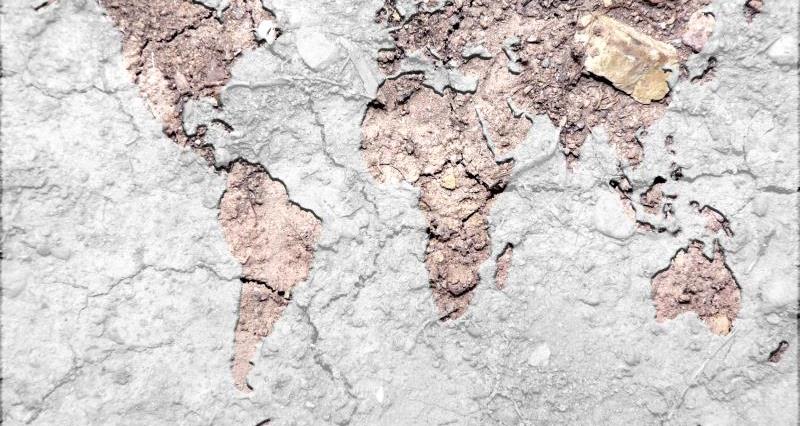The key findings:
- The temperature was 0.76 °C above the 1961–1990 average and so was the warmest year on record by far
- Record global ocean heat content down to 2000 m, with 93% of excess heat stored in oceans
- The daily maximum Arctic sea ice extent, which occurred on 25 February, was the lowest on record
- El Nino was one of the strongest on record.
Europe and the Middle East
Heatwaves affected Europe from May through to September. In May, Lanzarote and Valencia airports hit 42.6°C, exceeding the previous highest May temperatures by 6°C. The UK set a new July temperature record of 36.7 °C on 1 July. December was the warmest on record for a number of countries including UK, France, Germany and the Netherlands.
In the Central England Temperature series it was the warmest December since at least 1659. In the Alpes-Maritimes region of France on 3 October, close to 200 mm of rain fell in two hours and 20 people were killed. In December, the UK had its highest ever 24-hour rainfall total (341.4 mm at Honister Pass in Cumbria) and flooding was widespread.
Africa
During the spring of 2015 in South Africa, record high temperatures were exceeded on a regular basis with a new high of 48.4°C recorded. In Morocco, extreme heat in July led to a nearly 50% reduction in citrus fruit production. Heavy rain affected the western coast of Libya in September when more than 90 mm of rain fell in 24 hours - the monthly average is 8mm. The West African monsoon brought significant flooding affecting about 21,000 people in Burkina Faso in July and August. By the end of the South African summer, the prolonged drought conditions had severely affected the maize, sugar cane and sorghum harvests. As a whole, 2015 was the driest calendar year on record.
Asia and South-West Pacific
Extreme heat is common in the pre-monsoon season on the Indian subcontinent, but, in 2015, the heat extended over a larger area than normal. The Hong Kong Observatory reported its warmest summer since records began in 1884. Pakistan also saw unseasonal weather during March and April, with heavy rain and late frost damaging crops. Maize and potato crops in parts of China were seriously affected by successive droughts during the summer and autumn. Drought over the European part of the Russian Federation during the late spring and summer led to crop failures over more than 1.5 million hectares. Australia had its warmest October on record and it was the fifth-warmest year on record.
South America
Temperatures in 2015 were above normal for most of the continent, with anomalies of up to 2°C. Argentina had its coldest October but for the country as a whole, 2015 was the second-warmest year on record. The persistently dry conditions in Colombia and Venezuela had a severe impact on agriculture. In the Patagonia region of southern Argentina, high temperatures and low rainfall at the beginning of 2015 provided the ideal conditions for one of the largest wildfires in the country’s history - the fire lasted nearly two months and affected 41,000 hectares of forests. In the last quarter of 2015, extreme rainfall in several parts of South America led to more than 80,000 people being displaced.
North America and the Caribbean
Western Canada and the United States were unusually warm. Low annual rainfall, associated with El Niño, was widespread throughout Central America and the Caribbean. Over 700 wildfires were reported in Alaska during July, and nearly 2 million hectares were burned during the summer. It was the wettest May on record for the contiguous United States. Further west, however, long-term drought conditions continued. On 1 April, the snow water equivalent was 5% of normal levels in the West – the lowest since measurements began in 1950. It was both the wettest and the warmest December on record for the contiguous United States.
- Read more here.
